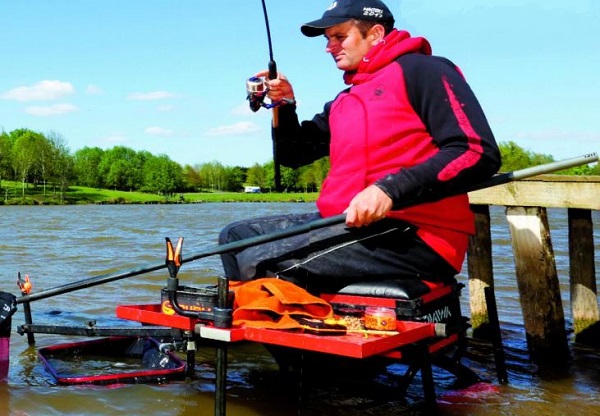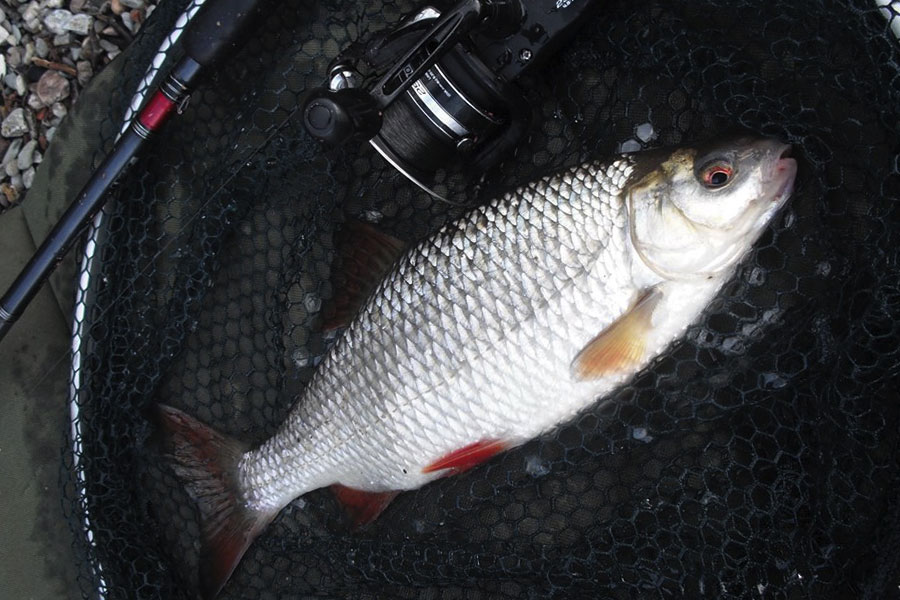With a whole range of different feeders available – from tiny blockends to big Methods and bullet-shaped distance feeders for longer chucks. We’re often asked, how do you pick the right one to use, so here’s our simple guide…

HYBRID FEEDERS
For us, this is the ultimate feeder as it offers brilliant bait protection on the cast and perfect bait presentation once on the bottom. It really doesn’t get any better than this because it can be used anywhere. Size-wise there are three we recommend – a Mini for short chucks on narrow lakes, often to islands, a Small for general usage on commercial stillwaters, and a Large for big chucks on the bigger venues. Choice of weight depends on the circumstances you are faced with but we always like to opt for a heavier feeder over a lighter one because it’s crucial when fishing the hybrid that the feeder doesn’t move once it’s on the bottom.

Hybrid feeders are so versatile and really must be in your armoury. Use them anywhere.
STANDARD WIRE/PLASTIC CAGE
The standard cage feeder is our main choice for short-range work on natural venues or occasionally winter fishing on commercials. What we like about a cage feeder is that the water can fully penetrate the feeder as soon as it hits the bottom which in turn hastens the breakdown of the feeder’s contents. It also means that even when the feeder is still full, the fish can see the contents and will often attack the feeder. They are ideal for baits such as groundbait, chopped worms, casters, but they’re great for feeding wetted pellets as well. We actually prefer wire but it isn’t always suitable. This is because a wire cage tends to dig into the water so, if you’re on a swim with lots of snags, they’re not always the best option when it comes to feeder choice. A plastic feeder, on the other hand, will rise to the surface a lot quicker meaning they can be more suitable in this type of situation.
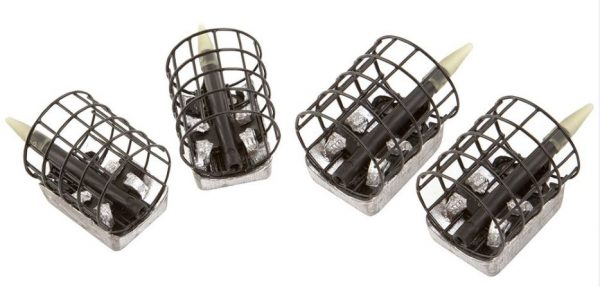
Cages large and small made of metal or plastic are suitable to feed a big variety of baits.
METHOD FEEDERS
The original ‘king of commercials’, the Method feeder has been around for years and is still a firm favourite with many anglers. Since the Hybrid feeder evolved, our customers don’t use them quite as much but they still have their place in our armoury. If you want to attack a swim, there is quite simply nothing better due to the amount of payload a Method feeder can hold. We’re a massive fan of the Guru X-safe feeders mainly because they enable us to use an elasticated feeder safely. We recommend changing to longer stems on the feeders as the extra length of elastic means fewer lost fish, particularly around the net. The longer stem also gives more stability on the cast so it’s easier to cast further and more accurately.

DISTANCE FEEDERS
When fishing at long range on big, natural waters we like to use the Preston Innovations Distance feeder for fishing between 45m and 70m. These feeders are weight-forward in design so they cast straight and true even in a strong crosswind which helps with accuracy. Size-wise, we recommend using 30g or 40g, but this can vary depending on the conditions and distance you need to reach.
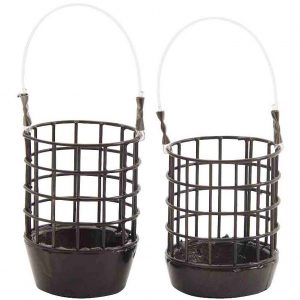
MAGGOT FEEDERS
Maggot feeders really are a winter tactic on F1 dominated venues where the fish love maggots. The only real variable in the feeders we use is in their size. Try cutting the feeders down so they hold less bait, plus at the same time try enlarging the holes for a quicker release of bait in even the coldest of conditions. Maggots tend not to be very active in the cold so the larger holes ensure they are all released from the feeder. With maggot feeders we like just enough weight to reach the required distance. The reason for this is that the water is cold and clear in winter so the less disturbance you make when casting the better, because F1s are easily spooked!
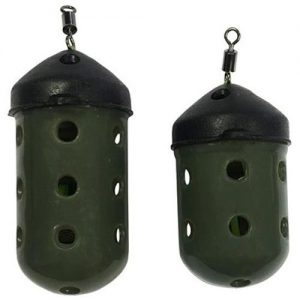
TOP FEEDER TIPS
EXTRA WEIGHT
Adding extra lead to feeders is something we do a lot. You may want to use a tiny cage feeder to feed a small amount of bait, but at 40m, so extra weight helps you hit the spot. It also enables you to fish faster. A heavier feeder sinks quicker saving time waiting for a feeder to hit bottom. Once it’s on the bottom you can tighten the line much quicker. Getting tight to a feeder quickly is particularly important when fishing for roach and skimmers which often feed off the bottom. This means 85 per cent of bites can come as you are tightening up.
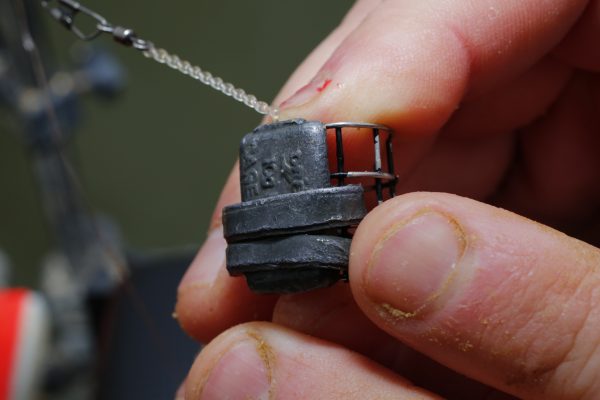
CLIPPING UP
Clipping up is an essential part of feeder fishing because it enables you to build a swim. If you don’t use a line clip, every time you cast out you’re effectively casting to a new spot, thereby spreading bait all over the place. Using a line clip and picking a marker on the far bank enables you to hit the same spot every cast. A little tip when clipping up for carp, is to stop the rod slightly behind you on the cast. This way you can get two or three turns back on the reel as you tighten up. If you do hook a carp that’s already running you have a little more time to remove line from the clip.
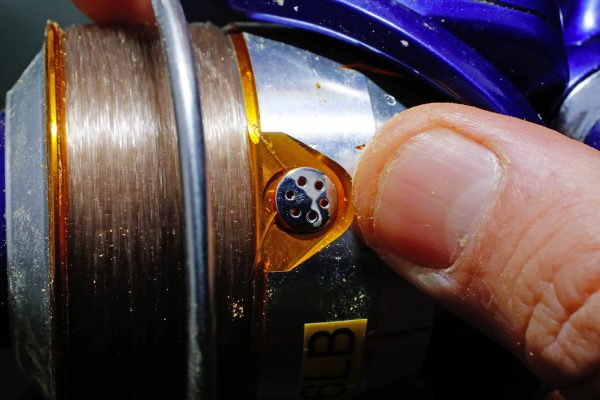
METHOD HOOKBAITS
We use two types of hookbaits – ‘blend in’ and ‘stand out’. Blend in baits match the bait around the feeder. For instance, if you’re fishing 2mm pellets around the feeder, you would use 6mm hard pellet hookbaits. At the opposite end of the spectrum, you have stand out baits such as mini fluoro boilies. These work because they are bright and more easily seen by the fish. Dead maggots can also be an effective hookbait. For carp, we like to fish three or four on a size 14 LWG hook.
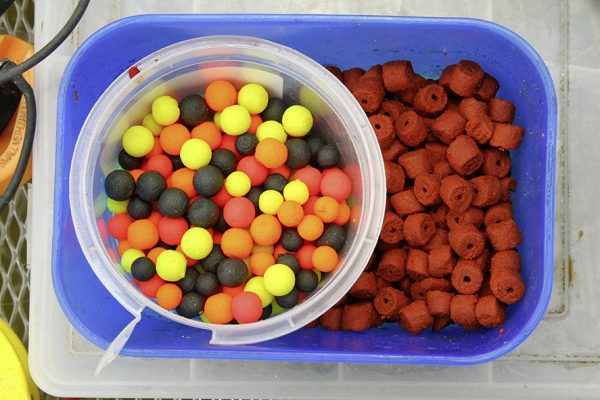
If you require any more tips or information on feeder fishing, please contact the Angling Active team. We are more than happy to help.

Guru X-Safe Method Feeder
from £2.75Drennan Feeder Bombs
from £1.99Korum Dura Method Feeder and Mould
from £4.99Guru Hybrid In-Line Feeder
from £2.75Kamasan Black Cap Feeders
from £1.99Preston Innovations ICS Elasticated Dura Banjo Feeders
from £2.97


